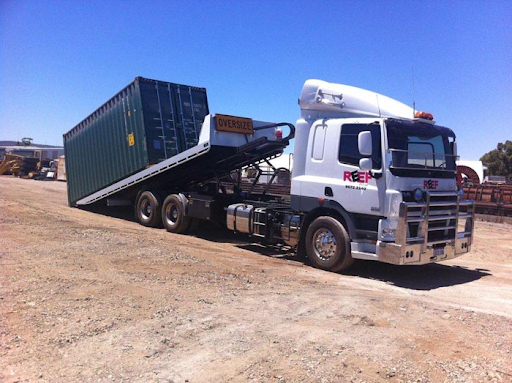Essential Tips for Maintaining Your Tilt Tray Vehicle
If you’re in the business of transporting vehicles or heavy equipment, you likely understand the importance of having a reliable tilt tray vehicle. Operating a tilt tray vehicle with safety is crucial. These versatile trucks are designed to make loading and unloading a breeze, but like any piece of machinery, they require proper care and maintenance to ensure they operate smoothly and safely. In this guide, we’ll explore essential tips for maintaining your tilt tray vehicle, helping you extend its lifespan and minimize the risk of breakdowns. If your tilt tray vehicle relies on a diesel engine, considering diesel delivery services in Longmont can be an efficient way to keep it fueled and ready for operations, contributing to its overall reliability. In this guide, we’ll explore essential tips for maintaining your tilt tray vehicle, helping you extend its lifespan and minimize the risk of breakdowns.
Experience seamless diesel delivery in Las Vegas with our reliable and efficient services. Our team ensures timely and hassle-free fuel supply, catering to the diverse needs of businesses and industries in the vibrant city. Trust us for on-time diesel delivery, keeping your operations running smoothly.
Regular Inspection and Lubrication
One of the fundamental aspects of tilt tray vehicle maintenance is conducting regular inspections. This involves checking various components such as the hydraulic system, winches, and cables for any signs of wear or damage. Look out for leaks, loose connections, or frayed cables, as addressing these issues promptly can prevent more extensive and costly repairs down the line.
In addition to inspections, proper lubrication is crucial for keeping the moving parts of your tilt tray vehicle in top condition. Make sure to lubricate the tilt tray mechanism, winches, and any other moving parts according to the manufacturer’s recommendations. This not only reduces friction but also helps prevent premature wear and ensures smooth operation.
Battery Maintenance
A reliable battery is essential for the proper functioning of your tilt tray vehicle. Periodically inspect the battery terminals for corrosion, and clean them as required. Examine the battery cables for any indications of wear or damage, and replace them if necessary. Keep in mind that extreme temperatures can affect battery performance, so take precautions in both hot and cold weather conditions.
Consider investing in a battery tester to monitor the charge level and identify potential issues before they become critical. Additionally, make sure to follow the manufacturer’s guidelines for charging and replacing the battery to ensure optimal performance and longevity.
Tire Care
Tires play a significant role in the safety and efficiency of your tilt tray vehicle. Inspect the tires regularly for signs of uneven wear, bulges, or punctures. Check and maintain the recommended tire pressure to ensure proper traction and stability during transportation.
Regularly change the position of the tires to encourage uniform wear and enhance their overall lifespan. When it’s time to replace them, invest in high-quality tires suitable for your specific tilt tray vehicle model and the types of loads you typically transport. Proper tire maintenance not only enhances safety but also contributes to better fuel efficiency.
Hydraulic System Checks
The hydraulic system is a critical component of tilt tray vehicles, responsible for lifting and tilting the tray. Regularly check for hydraulic fluid leaks and ensure that the fluid levels are within the recommended range. If you notice any issues, address them promptly to prevent damage to the hydraulic components.
In addition to fluid levels, pay attention to the hydraulic hoses and connections. Inspect them for wear, cracks, or any signs of damage, and replace any faulty parts immediately. Proper maintenance of the hydraulic system is essential for the reliable operation of your tilt tray vehicle.
Brake System Maintenance
Maintaining a well-functioning brake system is paramount for the safety of both the tilt tray vehicle operator and the transported goods. Regularly inspect the brake pads, discs, and hydraulic components for wear and tear. Replace any worn-out parts promptly to ensure optimal braking performance.
Check the brake fluid levels and top up if necessary, following the manufacturer’s recommendations. Brake fluid absorbs moisture over time, which can lead to reduced braking efficiency and potential damage to the brake components. Regular maintenance of the brake system is crucial for safe and effective operation.
Keep the Tilt Tray Clean
While it may seem like a simple task, keeping the tilt tray clean is an often overlooked aspect of maintenance. Regularly remove dirt, debris, and corrosive materials from the tray surface. This not only helps prevent damage but also ensures smooth movement during loading and unloading operations.
In regions where road salt is used during winter, pay extra attention to cleaning the tilt tray thoroughly. Road salt can accelerate corrosion, and timely cleaning can help mitigate its corrosive effects. Consider applying a protective coating to the tray surface to further enhance its resistance to environmental factors.
Follow Manufacturer’s Maintenance Schedule
Every tilt tray vehicle comes with a manufacturer’s maintenance schedule outlining specific tasks and intervals for inspection and servicing. It is crucial to adhere to this schedule to ensure that your vehicle operates at its best. The manufacturer’s recommendations are based on extensive testing and engineering expertise, making them essential guidelines for preserving the longevity and reliability of your tilt tray.
Final Thoughts
Maintaining your tilt tray vehicle is a proactive approach that pays off in the long run. Regular inspections, proper lubrication, attention to the hydraulic and brake systems, and adherence to the manufacturer’s maintenance schedule are key components of a robust maintenance routine. By following these essential tips, you not only extend the lifespan of your tilt tray vehicle but also contribute to the safety and efficiency of your transportation operations.



